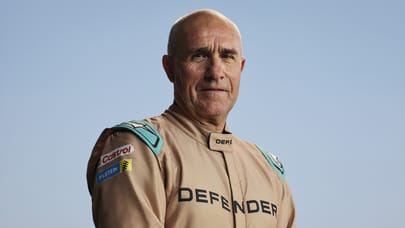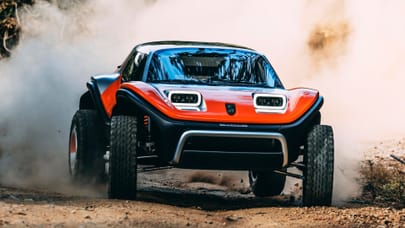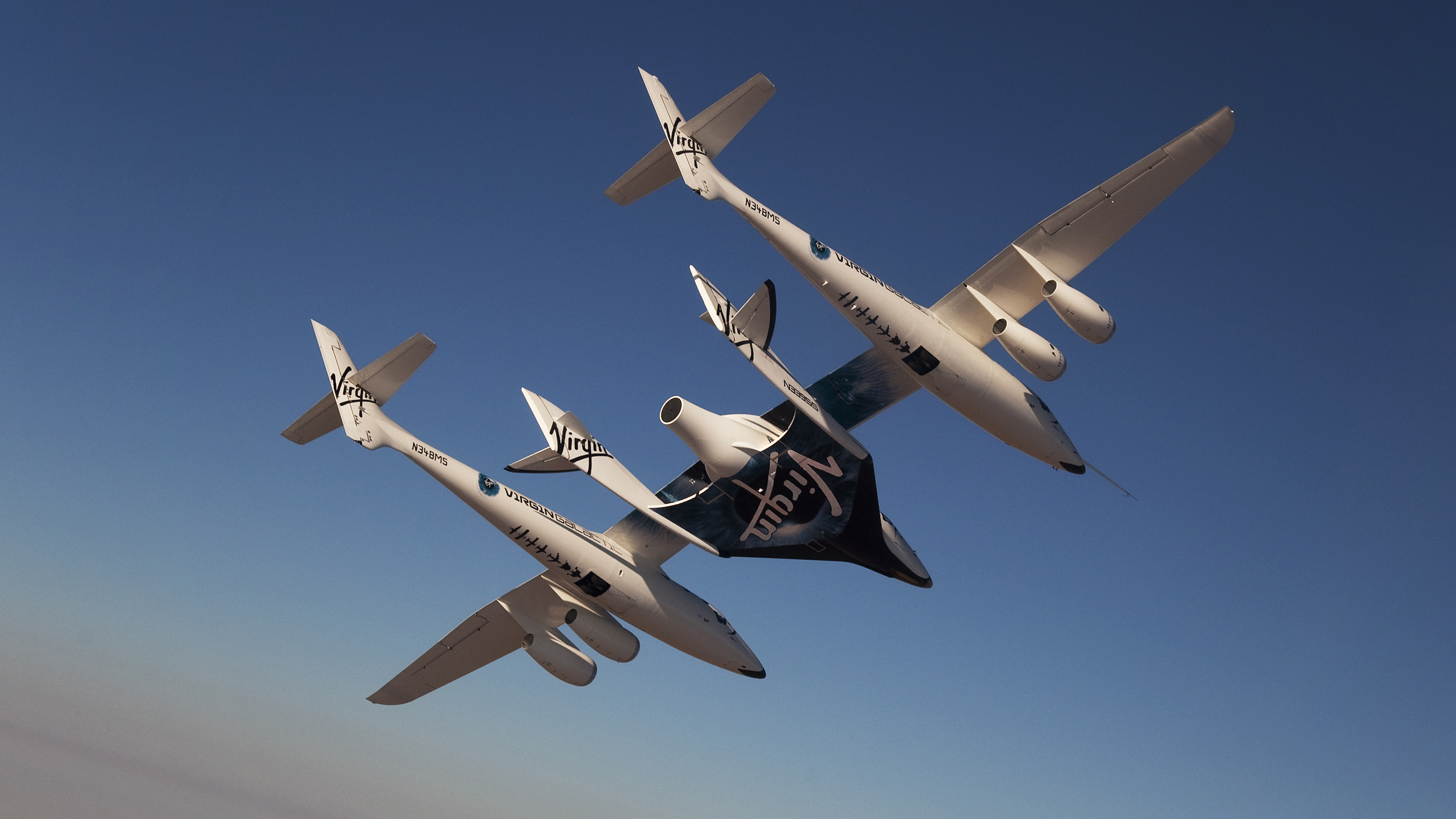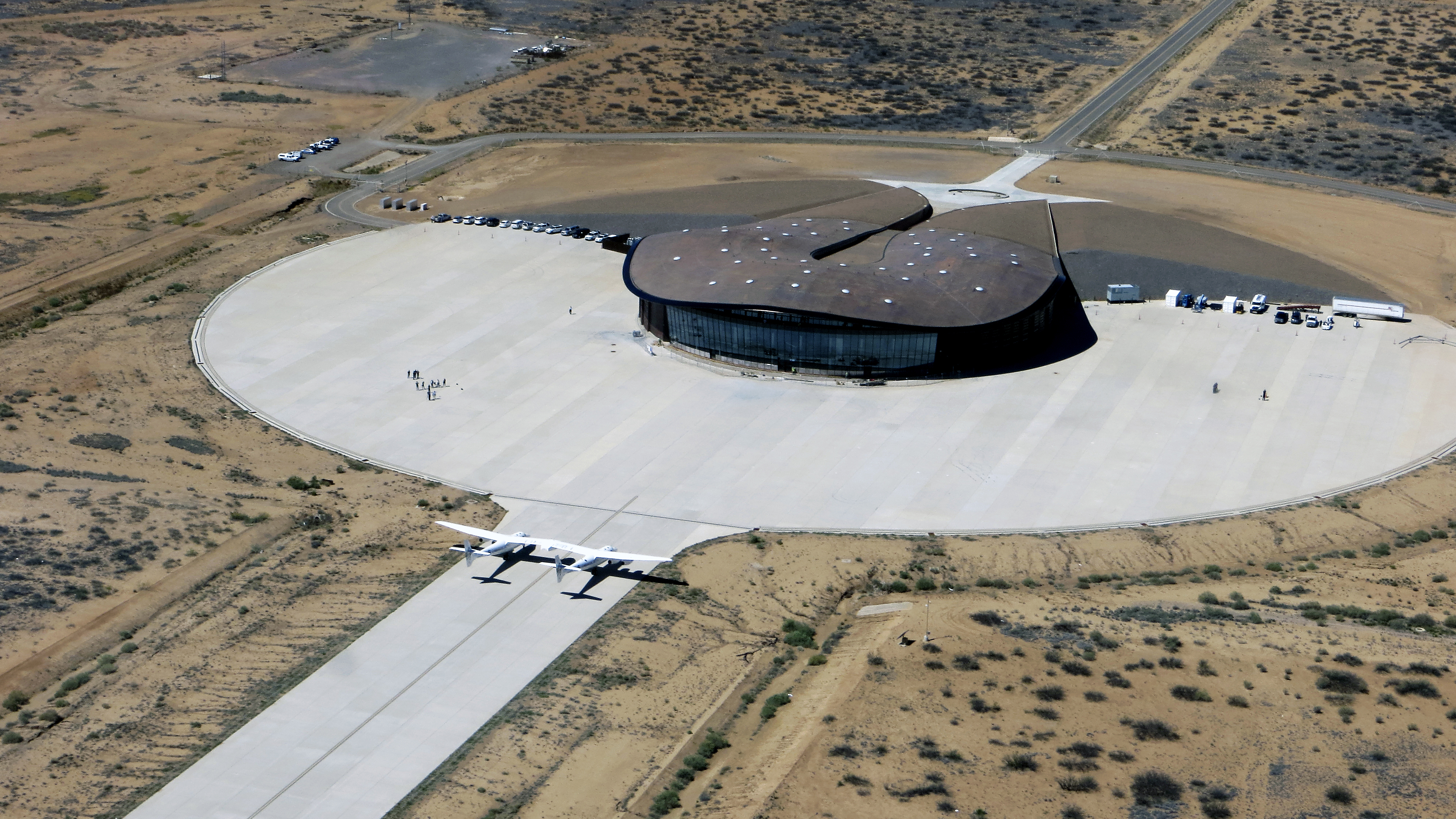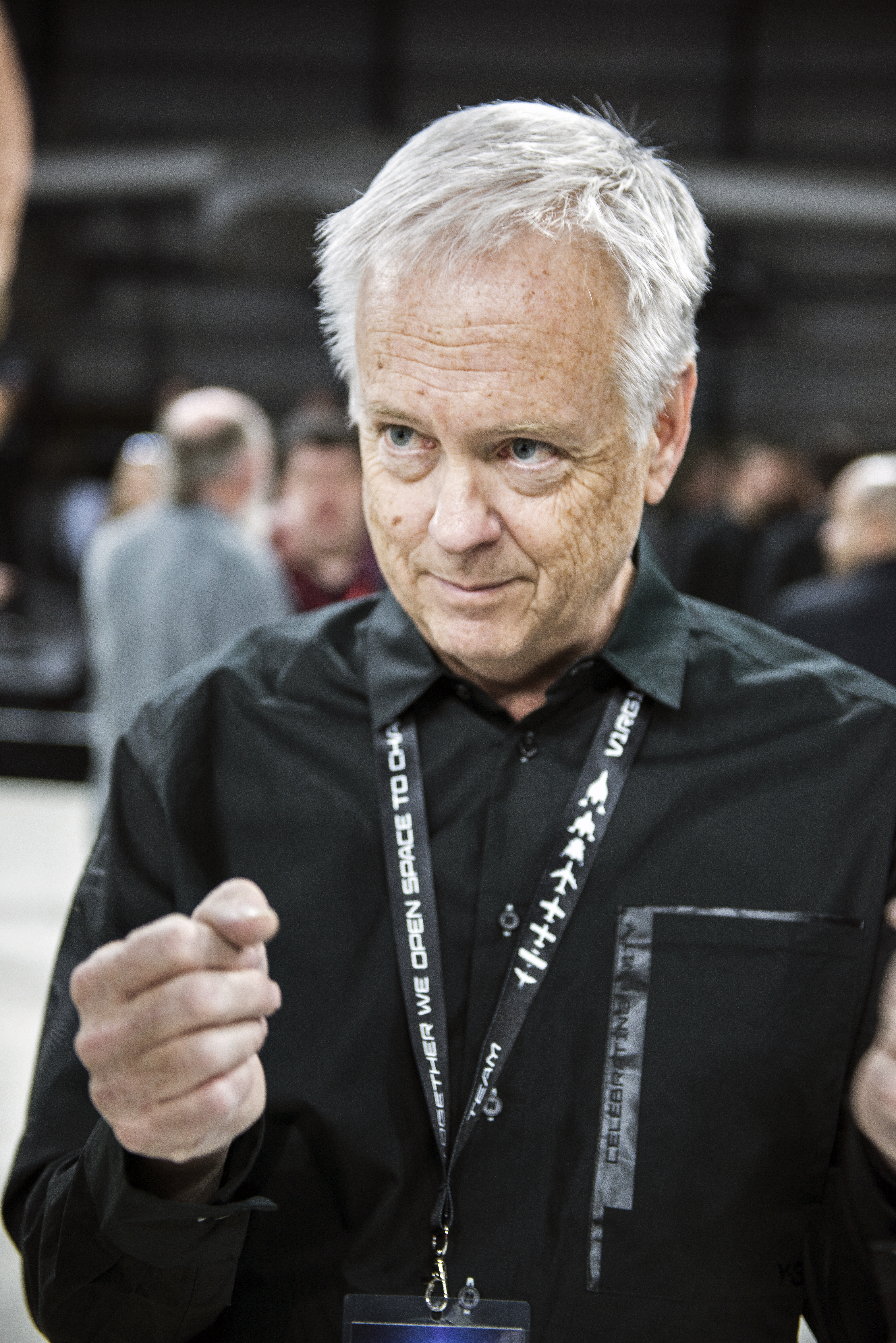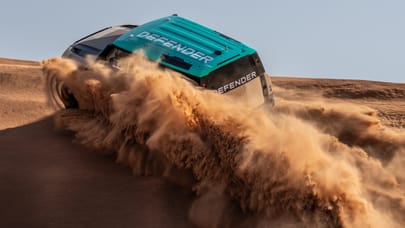
Behind the scenes at Virgin Galactic
Don’t want a supercar as you’ve already got too many? Why not buy a ticket to space instead?
Supercar ownership or becoming an astronaut? Not a question many of us will have to grapple with, but for those with the disposable income to buy a serious toy, Virgin Galactic is offering an even more extreme way to spend your hard earned... Sure, having a 488, 650S or Huracán on the drive would open up a boundless set of opportunities for four-wheeled adventure. But how about trading all that to explore space? Driving at 200mph is all well and good, but 3,000mph buys you more bragging equity at the bar.
Words: Charlie Turner
Photography: Rowan Horncastle
This article was originally published in the September 2016 issue of Top Gear magazine
Being able to say you’ve (almost) slipped the bounds of the planet, travelled at Mach 4, spent five minutes weightless while staring at Earth from a perspective that, until now, has been the preserve of 536 people, is a swap definitely worth considering. As VSS Unity is rolled out in front of its enthusiastic audience at Virgin Galactic’s HQ’s in Mojave, I’m contemplating what it must be like to have the luxury of that choice.
Unity is pulled into place in front of the mothership, WhiteKnight, by a pristine white Range Rover, with Galactic’s founder, chairman and project evangelist, Richard Branson, protruding through the sunroof and waving enthusiastically. Today marks a significant milestone in a difficult journey.
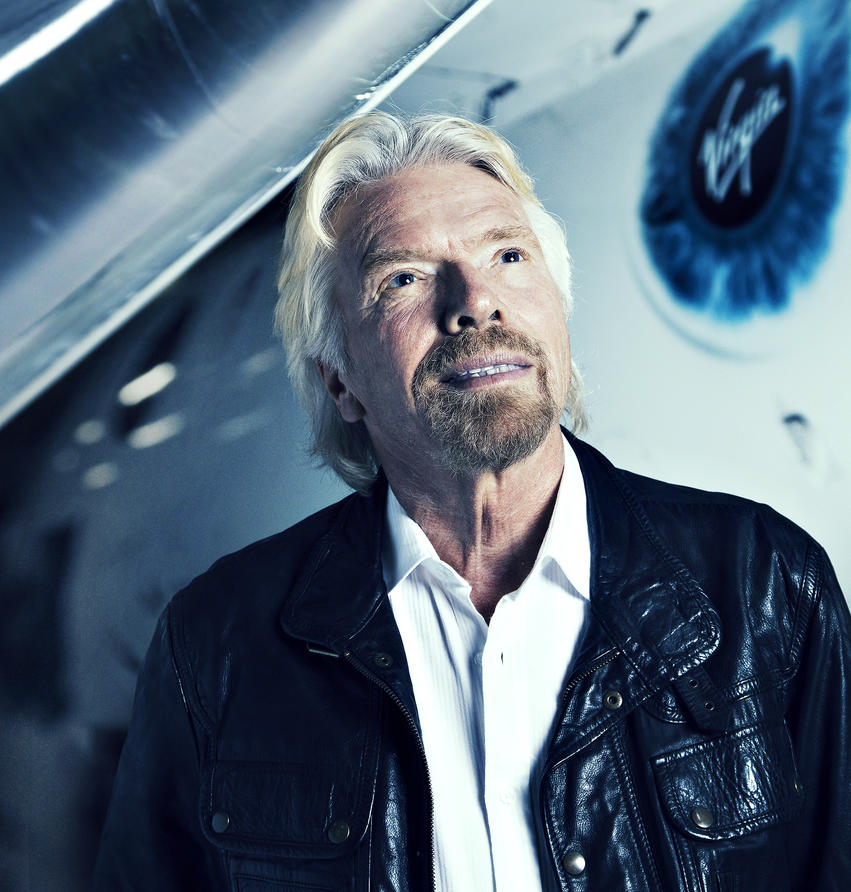
At 10:51am on 31 October, 2014, VSS Enterprise, having dropped from WhiteKnight and fired its rocket motor, suffered a catastrophic failure 11 seconds into the burn, when its feathering system deployed outside of operational parameters. This resulted in the tragic loss of pilot Michael Alsbury, and debris being spread across a 35-mile area of the Mojave desert.
Somewhat miraculously, Peter Siebold, the second crew member, survived the 10-mile fall to Earth. In a feat Iron Man would be proud of, he was knocked unconscious when Enterprise broke up and when he came round he was battling -70°C temperatures, a lack of oxygen and a desperate need to extract himself from the pilot seat he was still attached to. Free-falling and dipping in and out of consciousness, he managed to free himself and came round as his parachute deployed automatically.
A subsequent National Transport Safety Board (NTSB) investigation revealed the cause of the accident wasn’t mechanical failure, but human. Inexplicably, Alsbury had unlocked Enterprise’s feathering system at Mach 0.92, not its intended speed of Mach 1.4, the aerodynamic pressure overcame the motor that controls the wings as the craft went through the sound barrier with catastrophic consequences. Some began questioning the safety of the craft and Branson’s capability to deliver space tourism.
When you think of space travel, especially Branson’s take on it, you imagine a 2001: A Space Odyssey style production facility but, like many boundary-pushing businesses, the reality is somewhat removed from the fantasy. Virgin Galactic is based at the Mojave Air and Space Port. While sounding glamorous, it’s actually a set of nondescript low-tech huts set in a dusty wasteland 100 miles inland from LA. But their outward appearance belies the cutting-edge work, engineering and creativity that occurs inside. Ahead of Unity’s glittering reveal, I caught up with Galactic CEO George Whitesides and asked what they had learned from the accident.
“I think we took this all pretty seriously before, but it [the accident] drove a hard line underneath how serious what we’re doing is. Where we are today is where the X1, the X2, all that early stuff happened. There were a lot of challenges and bad days during that time, but we now have the advantage of the work that they did 50, 60, 70 years ago in the high spectrum. What’s interesting today is that the government has become much less risk-tolerant. The tolerance of risk, of trying important innovations, has moved over to the private sector. When we get there, we’re going to have a system that is really safe, that’s capable of dozens of flights a year. That will be a remarkable thing.
“One would never want this to happen, but any anomaly that you have in a test-flight programme should make your vehicle better. That’s the whole point of it... to learn as much as you can about your vehicle, so that when you actually start flying commercially, those problems or challenges have been driven out of the vehicle.”
Following the NTSB’s findings, the feather system now has a mechanical pin that prevents it being engaged unless it’s within the right parameters. Additional assurance comes from the fact that Unity is the first craft to be built by The Spaceship Company, Branson’s manufacturing and testing team, which has taken over from Scaled Composites which had led that side of the project until the accident.
Top Gear
Newsletter
Thank you for subscribing to our newsletter. Look out for your regular round-up of news, reviews and offers in your inbox.
Get all the latest news, reviews and exclusives, direct to your inbox.
As it stands, 700 people have signed up to go into space, and bought the £172,000 ($250,000) ticket. Following the accident, Whitesides says they lost a dozen potential astronauts, but “since then, everybody’s just sort of hung on in there.” And hanging on in there is a common theme. Branson founded Virgin Galactic in 2004 and predicted in 2008 that first flights would occur in the next “18 months”. Over a decade since its formation, it’s a brutal fact that natural selection is having a more profound effect on the client base than aptitude in the vomit comet during astronaut training.
Branson is a natural showman, and the launch and reveal of Unity is timed to coincide with his granddaughter Eva’s first birthday. After an introduction from Professor Stephen Hawking – a signed-up future astronaut – Branson’s son, Sam, christens Unity with Eva breaking a bottle of milk over the ship’s nose. It’s predictably well judged and while Alsbury and Siebold are respectfully mentioned, the focus is very clearly on the future, not the past.
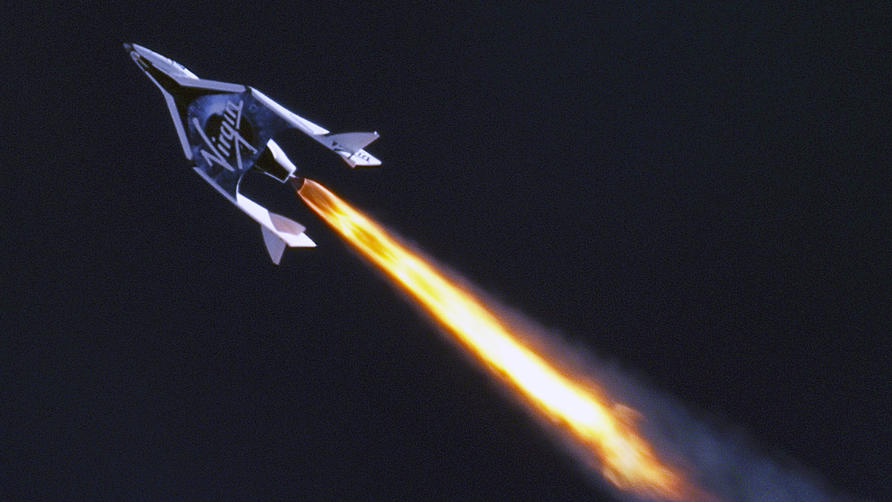
Unity is a truly beautiful thing, and the assembled crowd walk around and touch it, all the while in the shadow of WhiteKnight, the mothership, that will take Unity and its cargo of future astronauts to 14,600m before releasing her to cover the remaining distance on rocket power. As I marvel at the simplicity of the design, it’s probably worth a quick recap on what a thrill ride you get for your £172k.
The process starts with several days’ training at Galactic’s facility in the stunning Norman Foster-designed Spaceport America, which includes some parabolic flying unpleasantness and time in the high-g centrifuge (the equivalent to being strapped to a propeller). Pass that, and you’ll be ready to fly, at which point I hand over to Whitesides...
“The team will have been up half the night preparing the vehicle (loading the solid HTPB fuel and nitrous oxide oxidiser) getting all the fluids loaded and checking things out. We’ll wait until the last moment before we load the passengers and we’ll take off and go north, with WhiteKnight flying a figure of eight until we reach 14,600m above Spaceport. Unity will then be released and will ignite the rocket motor. The trajectory is very vertical, the burn is about a minute and you pull about 3.5–4g, but then you have so much momentum you’ll keep going up for quite a long time. We have a rocket engine that tails off at the end because, if we didn’t do that, you’d be out at 8g.”
At this point, passengers will be at 110,000m, having become astronauts at the 100,000m (62-mile) mark as they pass through the Kármán line. Interestingly, where space starts is something of a debate: FAI (Fédération Aéronautique Internationale) says 62 miles, but the USAF considers 50 miles enough to earn your astronaut wings. Big jessies. The passengers will experience weightlessness and view our planet from a rare and truly privileged perspective. But not for long. With the whole journey taking about two hours, door-to-door, the time spent weightless is around five minutes, before they have to be back in their seats. Given how tricky it is to get people to sit down on the 08:00 Ryanair flight to Malaga, there may be issues telling the astronauts the ride is over and it’s time to go home.

“Most people want to co-operate because they want to be safe. The other thing is if they don’t sit down, they will because it’s a multiple-g entry,” says ex-Nasa pilot and now Virgin Galactic test pilot Michael “Sooch” Masucci, whose flight CV includes T38s, U2 (good for high-altitude training) and the Space Shuttle. In short, he’s a man you’d trust.
With everyone back in their seats and the wings “feathered”, Unity begins its descent. At 21,500m the ship morphs into a glider as the wings defeather for the flight home. While the passengers have become astronauts and enjoyed a life-changing experience, arguably it’s the pilots that get the best deal. So, what’s it like to fly a 3,000mph rocket-powered glider? Back to Sooch:
“With modern aircraft there’s a lot of things between you and the flight-control surface. This is raw, just you and the flight-control surface. It’s pure – you are moving the controls and the controls move back on you. It’s very well designed, it’s very sweet in its control harmony and its responsiveness. You ask it to do something and it does it very well.”
As the crowds disperse, Branson is staring up at his creation. I grab the opportunity to talk to the man himself. Is this the hardest thing you’ve done?
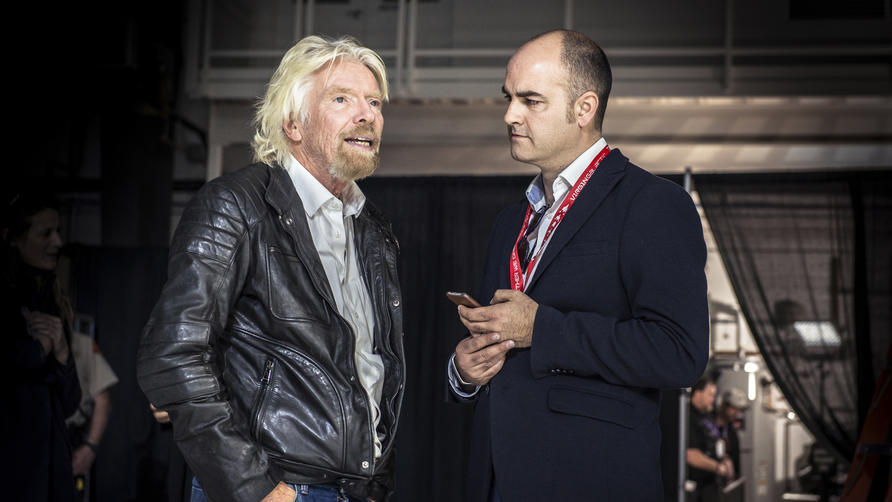
“Yes. We embarked on this 10 years ago, expected to have it all completed within five years, so it’s taken a lot longer than we’ve expected. It has been tough, but ultimately I think we can make a real difference, and we’re determined to do so and have a lot of fun in the process.
“I’ve met wonderful people, like Buzz Aldrin and others, and each one of them was completely changed from their time in space. Earth is the most beautiful planet that we know exists. Being able to see it from space, and realise how precious it is, I think, is important to get as many people as possible to do.”
But Branson’s vision goes way beyond awe-inspiring views. His wider aspirations for the project include usurping commercial airliners for long-haul trips and revolutionising point-to-point travel… eventually.
“Our spacecraft are built with wings. Most rockets that go into space, they’re rockets. Our planes have got wheels, and the reason for that is that we want to be a proper spaceship that goes into space, comes back, can land again and use this as the pioneering vehicle for point-to-point travel at tremendous speeds. It’s a big challenge. This vehicle can do 300 or 400 miles, point-to-point, already. Going from that to 3,500 miles across the Atlantic is a lot of work, then going from that to crossing the Pacific, 6,000 miles, is going to be even more work, but it is doable.
“We want our programme to make a difference, so apart from taking people to space, we’ve got to be putting 800 satellites into space that will connect millions of people who haven’t got internet or wi-fi access, and that’s an exciting part of this.”

And after space, where’s next? “Down. There’s a trench just off our island which is 30,000 foot down, called the Puerto Rico Trench. It’s the deepest place in the Atlantic. Once this is finished, I’d love to try to build a craft with windows that could go down there so you could see what’s going on.” And with that, he’s gone to celebrate the launch of his spaceship and his granddaughter’s first birthday.
It would be easy to dismiss Virgin Galactic as a vanity project for the rich elite, but it is so much more ambitious than that. Pushing the boundaries and striving to democratise space, while prototyping supersonic point-to-point travel opens up far greater possibilities than delivering the ultimate thrill ride. It takes a visionary, unwavering focus to turn these distant dreams into realities. For the price of a supercar, the next generation of astronauts will have made a significant contribution to the next generation of transportation and communications and, for that, they and the team in Mojave should be celebrated
Trending this week
- Car Review
BMW 1 Series
- Top Gear's Top 9
Nine dreadful bits of 'homeware' made by carmakers




